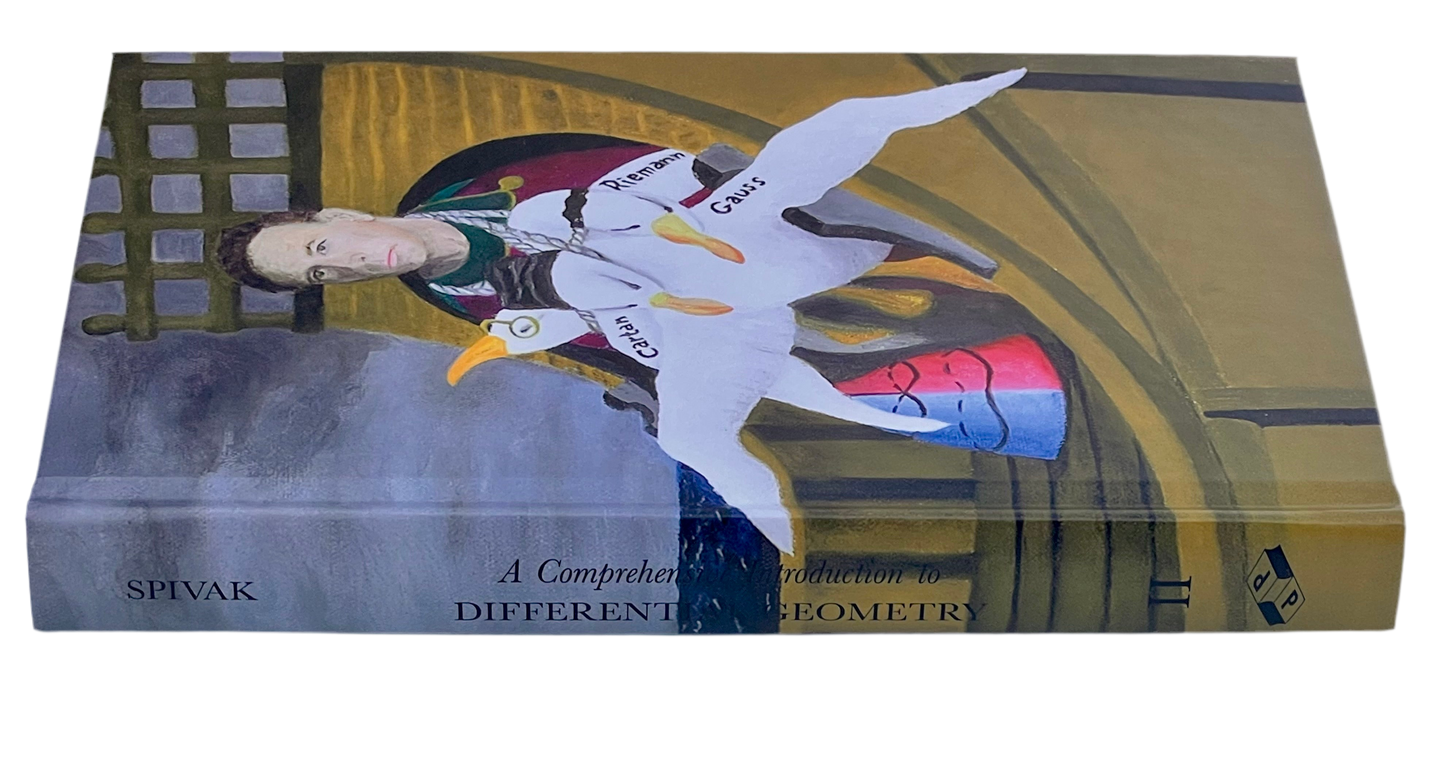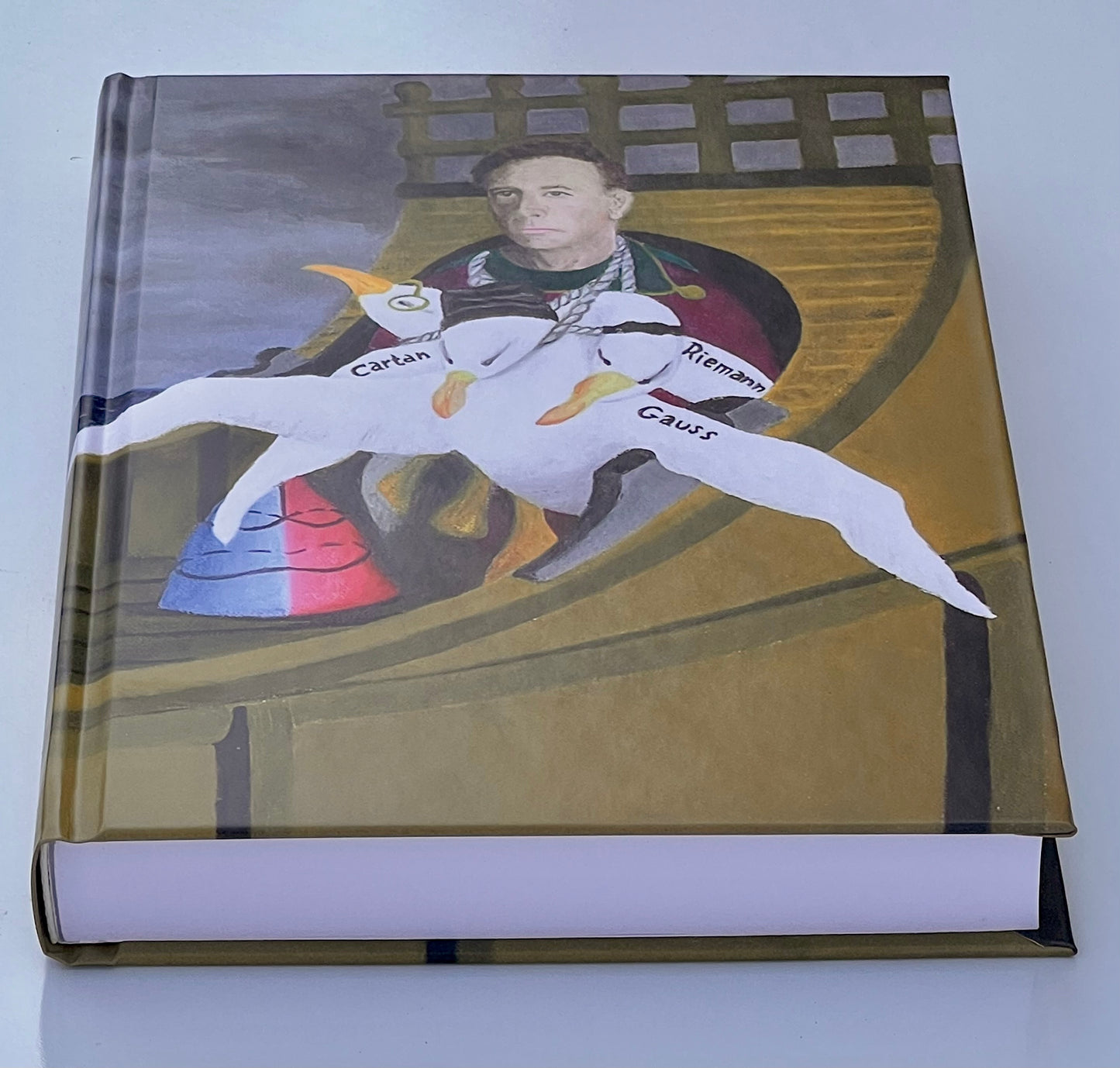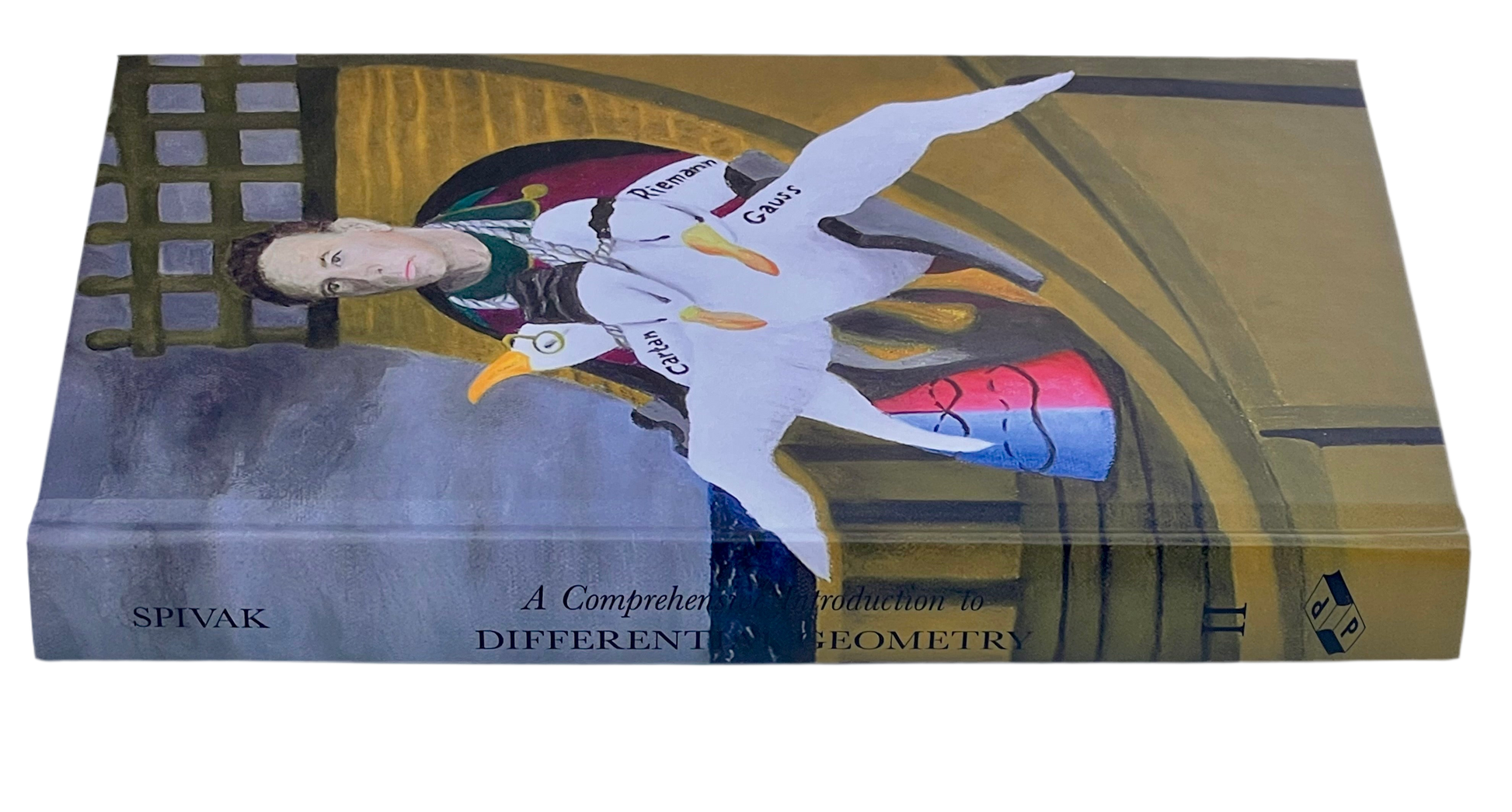1
/
of
5
Publish Or Perish
A Comprehensive Introduction to Differential Geometry, Vol. 2, 3rd Edition
A Comprehensive Introduction to Differential Geometry, Vol. 2, 3rd Edition
Regular price
$94.99 USD
Regular price
Sale price
$94.99 USD
Unit price
/
per
Couldn't load pickup availability
A Comprehensive Introduction to Differential Geometry, Vol. 2, 3rd Edition 3rd Edition
by Michael Spivak (Author)
A Comprehensive Introduction to Differential Geometry, Volume Two, Third Edition" by Michael Spivak, published by Publish or Perish, Inc. in Houston, Texas, , covers advanced topics in differential geometry. The book follows a semi-historical path, focusing on classical differential geometry in Chapters 3 and 4. Although it lacks problem sets, it compensates with a comprehensive bibliography in the final volume. The book delves into intricate details of differential geometry, providing a thorough understanding of the subject through historical context, theoretical foundations, and advanced mathematical formulations. Key topics include curves in the plane and in space, the curvature of surfaces in space, the curvature of higher-dimensional manifolds, the absolute differential calculus (Ricci calculus), the r operator, the repère mobile (moving frame), and connections in principal bundles. The document section is an excerpt from the book, specifically discussing Gauss' investigations of curved surfaces. It provides detailed explanations and proofs of various geometric properties and theorems related to the curvature of surfaces. The section combines historical context, mathematical rigor, and detailed proofs to explore the fundamental aspects of differential geometry, focusing on Gauss' contributions and Riemann's advancements. Overall, the book is a valuable resource for anyone looking to deepen their understanding of differential geometry, offering a comprehensive and authoritative guide to the subject.
Editorial Reviews
Review
A Comprehensive Introduction to Differential Geometry, Volume Two, Third Edition by Michael Spivak is a monumental work in the field of differential geometry. This volume is part of Spivak's five-volume series, published by Publish or Perish, Inc., and it delves deeply into the intricate concepts of differential geometry. The book is well-structured and provides a thorough exploration of the subject matter, making it an essential resource for anyone seeking a profound understanding of differential geometry. The preface of the book sets the stage for the study of modern differential geometry, following a semi-historical path and encountering classical differential geometry in Chapters 3 and 4. This approach helps readers appreciate the evolution of the field and understand the foundational concepts that underpin modern theories. Chapter 1 focuses on curves in the plane and in space, covering topics such as the curvature of plane curves, convex curves, curvature and torsion of space curves, Serret-Frenet formulas, and the classification of curves under special affine motions. This chapter provides a solid foundation for understanding the geometric properties of curves in different dimensions. In Chapter 2, the book explores what was known about surfaces before Gauss, including Euler's Theorem and Meusnier's Theorem. This historical perspective helps readers appreciate the contributions of early mathematicians to the field of differential geometry. Chapter 3 delves into the curvature of surfaces in space, discussing Gauss's theory of surfaces, the Gauss map, Gaussian curvature, the Weingarten map, and the first and second fundamental forms. The chapter also covers important concepts such as the Theorema Egregium, geodesics on a surface, and the integral of curvature over a geodesic triangle. Chapter 4 extends the discussion to the curvature of higher-dimensional manifolds, including Riemann's inaugural lecture, the hypotheses at the foundations of geometry, and the birth of the Riemann curvature tensor. This chapter provides a comprehensive understanding of the curvature properties of higher-dimensional spaces. Chapter 5 introduces the absolute differential calculus (Ricci calculus), covering covariant derivatives, Ricci's Lemma, Ricci's identities, the curvature tensor, classical connections, the torsion tensor, geodesics, and Bianchi's identities. This chapter is essential for understanding the mathematical framework used to describe the curvature of manifolds. Chapter 6 discusses the r operator, including Koszul connections, covariant derivatives, parallel translation, the torsion tensor, the Levi-Civita connection, the curvature tensor, Bianchi's identities, geodesics, and the first variation formula. This chapter provides a detailed exploration of the mathematical tools used in differential geometry. Chapter 7 focuses on the repère mobile (the moving frame), covering topics such as moving frames, structural equations of Euclidean space, structural equations of a Riemannian manifold, adapted frames, and Cartan connections. The chapter also discusses the curvature determines the metric, manifolds of constant curvature, Schur's Theorem, and conformally equivalent manifolds. Finally, Chapter 8 explores connections in principal bundles, including principal bundles, Lie groups acting on manifolds, Cartan connections, Ehresmann connections, parallel translation, covariant derivatives, the covariant differential and curvature form, the dual form and torsion form, structural equations, and Bianchi's identities. This chapter provides a comprehensive understanding of the geometric structures that arise in the study of differential geometry. Overall, A Comprehensive Introduction to Differential Geometry, Volume Two, Third Edition is an invaluable resource for students, educators, and lifelong learners. Spivak's writing style is clear and precise, making complex topics approachable for readers at all levels. The book's focus on problem-solving, mathematical rigor, and detailed explanations makes it a must-have for anyone interested in the field of differential geometry.
About the Author
Michael David Spivak, born on May 25, 1940, is an American mathematician with a profound impact on the field of differential geometry. As an expositor of mathematics, he has skillfully bridged the gap between complex theory and accessible explanations. Spivak’s legacy extends beyond academia—he is also the visionary behind Publish-or-Perish Press. 📚 Author of the Five-Volume Masterpiece: Spivak’s magnum opus, “A Comprehensive Introduction to Differential Geometry,” stands as a testament to his mathematical prowess. This five-volume work is a treasure trove for those seeking a deep understanding of geometric concepts. 🔍 Why Choose Spivak? 🌟 Clarity and Precision: Spivak’s writing style demystifies intricate topics, making them approachable for learners at all levels. 🌟 Problem-Solving Focus: Dive into challenging problems guided by a master mathematician. 🌟 Mathematical Rigor: Immerse yourself in proofs, theorems, and applications—the hallmark of Spivak’s approach. 📖 About the Mathematician: Hailing from Queens, New York, Spivak earned his Ph.D. from Princeton University. His contributions have left an indelible mark on mathematics, and his passion for clarity continues to inspire generations of learners. 🛒 Explore Spivak’s Work: Whether you’re a student, educator, or lifelong learner, delve into the intricacies of calculus, geometry, and mathematical reasoning with Michael Spivak. 📚🔢
Key Features
- Historical Context: The book follows a semi-historical path, focusing on classical differential geometry in its early chapters.
- Advanced Topics: It delves into intricate details of differential geometry, providing a thorough understanding of the subject through historical context, theoretical foundations, and advanced mathematical formulations.
- Key Topics: Includes curves in the plane and in space, the curvature of surfaces in space, the curvature of higher-dimensional manifolds, the absolute differential calculus (Ricci calculus), the r operator, the repère mobile (moving frame), and connections in principal bundles.
- Detailed Explanations: Provides detailed explanations and proofs of various geometric properties and theorems related to the curvature of surfaces.
- Comprehensive Bibliography: Although it lacks problem sets, it compensates with a comprehensive bibliography in the final volume.
- Authoritative Guide: It is considered a valuable resource for anyone looking to deepen their understanding of differential geometry.
- Historical Contributions: Focuses on Gauss' contributions and Riemann's advancements in the field.
Product details
- Publisher : Publish or Perish; 3rd edition (January 1, 1999)
- Language : English
- Hardcover : 375 pages
- ISBN-10 : 0914098713
- ISBN-13 : 978-0914098713
- Reading age : 18 years and up
- Item Weight : 1.7 pounds
- Dimensions : 9.5 x 6.67 x 1.31 inches
Share










